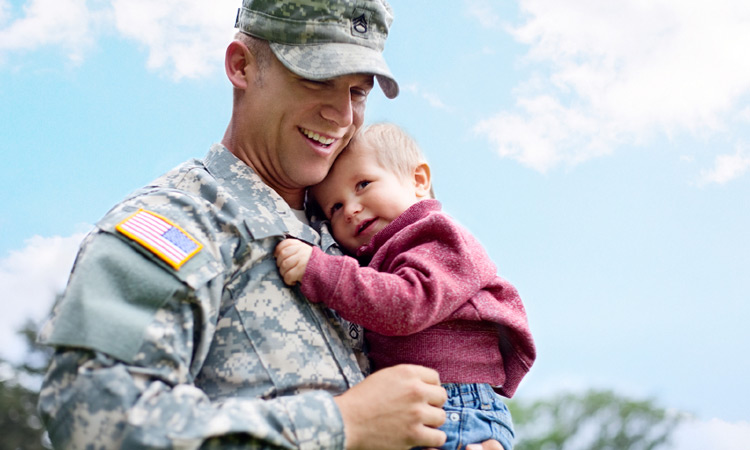
A warrior is not just one who has been to war and returned. Warrior has been recognized as a basic ideal, pattern of thinking and behaving, and social role that has occurred since the beginning of time. Becoming a warrior is an achievement of character. A veteran with post-traumatic stress disorder can use the ideal of warriorhood as a guide and goal for healing and growth.
What are the characteristics of the warrior? The ideal warrior is assertive, active and energized. He or she is clear-minded, strategic, and alert. A warrior uses both body and mind in harmony and cooperation. A warrior is disciplined. A warrior assesses both his own resources and skills and those arrayed against him. A warrior is a servant of civilization and its future, guiding, protecting, and passing on information and wisdom. A warrior is devoted to causes he judges to be more important and greater than himself or any personal relationships or gain. Having confronted death, a warrior knows how precious and fragile life is and does not abuse or profane it.
Each of these traits has shadow dimensions as well, which can emerge when the warrior is imbalanced, immature, inadequately trained, or traumatized. Shadow traits may include aggression, vengefulness, or cruelty. Instead of exercising discipline and control, the warrior may show wildness, emotional explosiveness, and impulsivity. He may be hypersexual and compulsive. At his shadowy worst, the warrior becomes masochistic or sadistic. We tend to associate soldiers with many of these traits because they are commonly unleashed during warfare. But they do not embody the ideal warrior of health, balance, and virtue.
The warrior ideal needs specific conditions to be realized successfully. Initiates need to experience a complete process from training through proving. The process begins early in the ways children inculcate warrior stories from their families and culture and play games replicating them. Later, through formal and informal means, elders guide young people in developing the skills and awareness of warriorhood. Initiates are tested in numerous ways. Their ultimate test traditionally comes in battle. If they survive, the test must be repeated as long as they are required or able to serve. Through that survival and successful service, they prove themselves worthy of being deemed one of their culture’s warriors.
The proper training of a warrior must be not just the physical and intellectual dimensions of military performance but also the values and traditions of warriorhood. This education must be achieved in an environment that fosters dignity and honor. In addition, guidance must be highly personal. The initiate must feel that his or her survival matters to concerned elders and that the transformation he or she is undergoing is critical to the culture’s preservation.
A warrior knows what he is fighting to preserve. Like a bull buffalo flanking his herd to protect it from predators, a warrior knows he is essential to his people’s survival. He knows he belongs. He receives honor and blessing from his community for the service he willingly provides, and he in turn blesses his community with his devotion and willingness to sacrifice his life, if necessary, for its well-being.
Moreover, warriorhood must be directed toward transcendent goals. It must be based upon universal principles and connected to divine and honorable powers and purposes. Sitting Bull sang:
Young men, help me, do help me! I love my country so;
That is why I am fighting.
Sitting Bull and his warriors, and other bands from innumerable traditional cultures, were never plagued with self-doubt about the value of their mission, as many of our soldiers are today. In order to do battle with a whole heart, the danger and threat to one’s home must be real, and the people must experience it as immediate and about to threaten their existence as a whole. They and their warriors must be in unity. Their cause and need to fight must be absolute—in the sense that there is really nothing else they can do to preserve their food, families, and culture.
Ideally, the testing and proving of a warrior is limited in its destructiveness. Rites of passage often present the possibility of death, and in some cultures they are not considered complete until the initiate takes another life. But not numbers of lives, and never slaughter or the destruction of an entire people. Threats and losses must not be arbitrary, impersonal or overwhelming.
Warriors are meant to play major roles in the lives of their communities, providing help in times of need and restraining rather than encouraging violence. They need guidance from others who have been through similar experiences, and they need to pass their values, wisdom, and experiences on to younger initiates. Ideally, during all phases of service, warriors interact with their people rather than remain separate from them.
A society cannot be healthy without its warriors. And societies with a class of mature warriors to remind the leadership and people of the realities of war are healthier, stronger, and less prone to violence.
We need warriors. The call to veterans, and a way to heal post-traumatic stress disorder, is to follow the path of the honorable returned warrior.
To find out about Rose’s thoughts on how to live a happier life, click here


